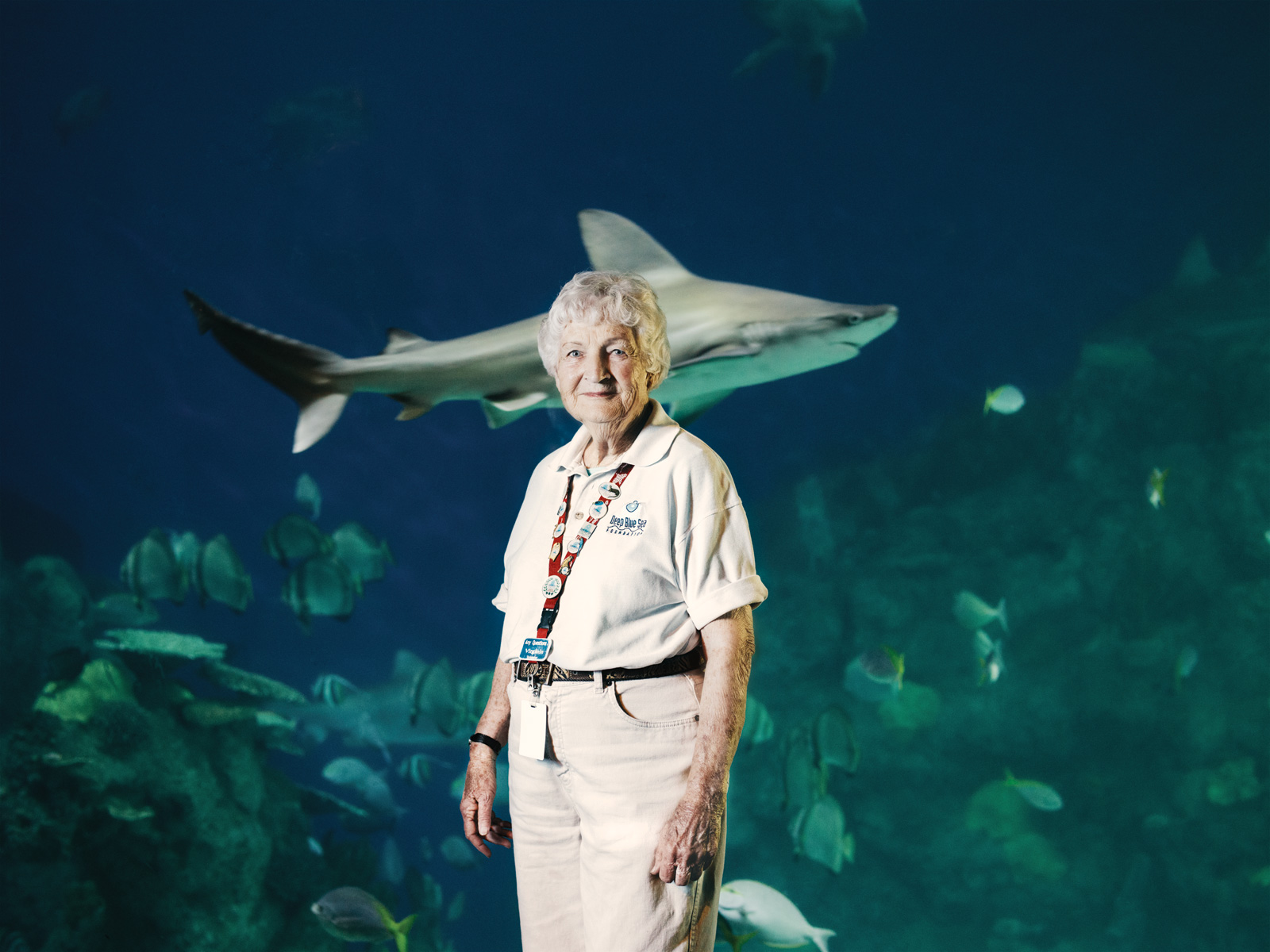The Local newsletter is your free, daily guide to life in Colorado. For locals, by locals.
For Virginia Phillips, Shark Week isn’t just some stretch in July randomly selected by the Discovery Channel (July 23 to 29 this year)—it’s every week. For the past 18 years, the former fifth- and sixth-grade teacher has volunteered as a docent at institutions such as the Denver Museum of Nature & Science, the Denver Zoo, and the Downtown Aquarium, where she spends much of her time educating marine enthusiasts about sharks. We sat down with the schoolteacher turned shark savant to talk tiger sharks, teeth, and myths of oceanic proportions.
Resumé
Name: Virginia Phillips
Age: 81
Occupation: Retired elementary school teacher; docent at Denver’s Downtown Aquarium
5280: How did you become so interested in sharks?
Virginia Phillips: My knowledge and passion for sharks came only once I started working at the aquarium. The education department does a really good job of putting together classes that teach the volunteers about the animals; for the shark ones, they pull out skulls and skin for us to touch and look at. For me, learning about sharks was learning to love them.
What fascinates you most about them?
I like to talk about how their teeth grow. They aren’t embedded in bone, so when the shark eats, he loses a lot of teeth. Sand tigers, for instance, can have as many as 20,000 teeth over the course of a lifetime.
What shark do you think best represents you at the aquarium?
Oh, the sand tiger. That’s the one with all of the teeth. He’s got this big grin.
What’s one of the biggest misconceptions about sharks?
That they are man-eaters. The movie Jaws did a lot to defame sharks. They’re really the top predators that keep the ocean healthy [by preventing smaller animals from overgrazing on kelp and other vital ocean plants].
And is there anything threatening them?
Pollutants called microplastics. They’re the little, itty-bitty things that make your toothpaste slightly grainy, and they’re also found in facial scrubs. They collect in the kelp, go up through the food chain, and end up in the system of the sharks. [The specific health effects of microplastics are still unclear, but scientists agree that they’re harmful to aquatic life.]
Have you ever swum with sharks?
I haven’t been in a tank, but when I was snorkeling in Madagascar, there were nurse sharks swimming below. When they eat, they make a smacking noise like a baby when she’s nursing.
You’ve been working at the aquarium since it opened in 1999. Why do you think it’s such an important institution?
I remember a lot of naysayers asking, “We’re landlocked—why does Colorado need an aquarium?” They didn’t realize that this is the only chance that many Coloradans will ever have to see a shark and all of these different fish.









